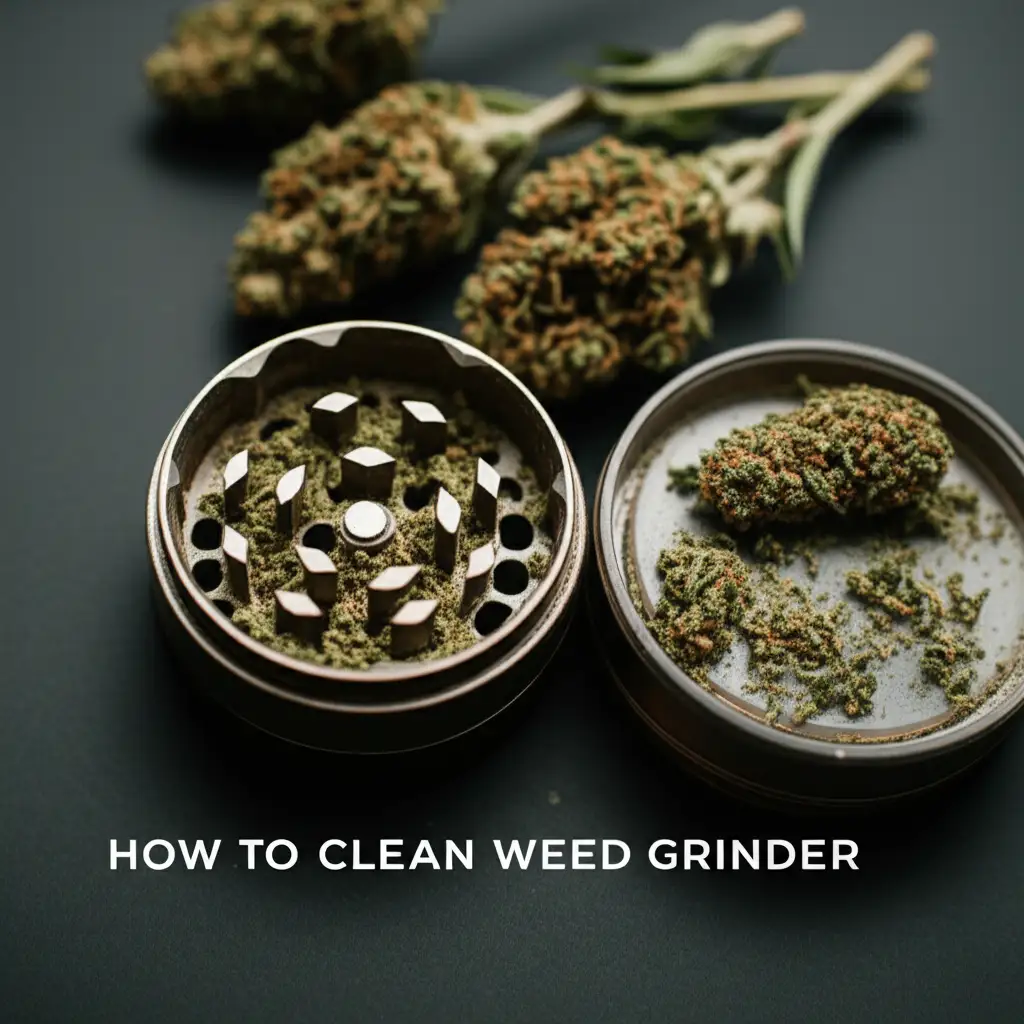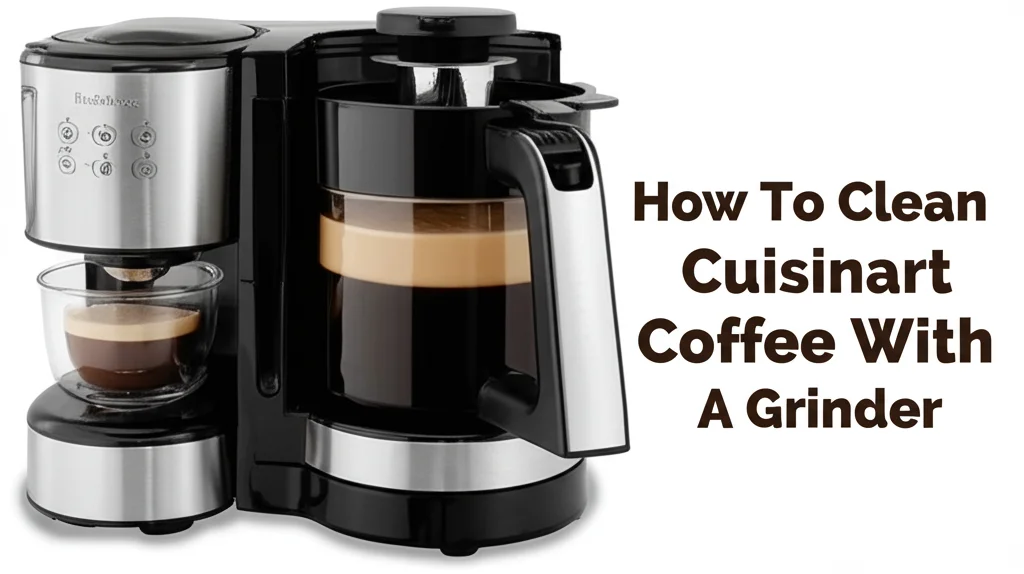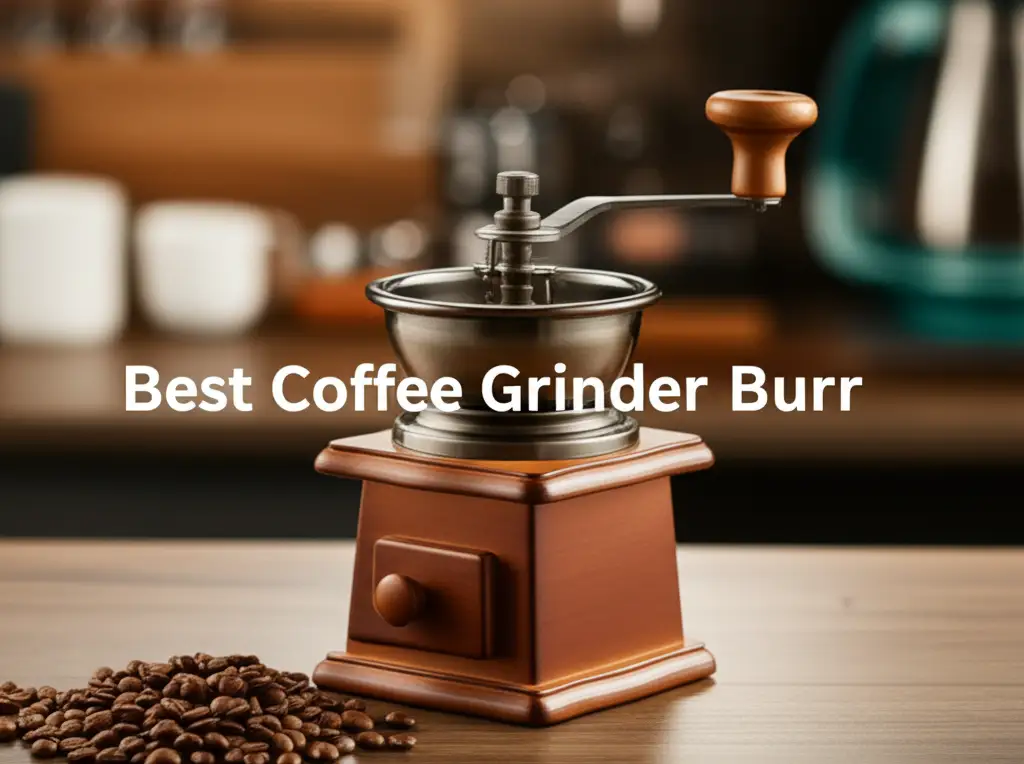· Cannabis Accessories · 14 min read
How To Clean Weed Grinder

Mastering the Art: How to Clean Your Weed Grinder Effectively
Is your weed grinder feeling sticky? Are you struggling to get a smooth grind? A dirty grinder not only affects performance but also impacts the quality of your experience. Resin and plant matter build up over time, clogging teeth and screens. This buildup makes grinding harder and reduces the kief catch.
Cleaning your weed grinder is a simple process. It brings it back to perfect working order. A clean grinder ensures a consistent grind every time. It also helps you collect more valuable kief. In this guide, I will share effective methods to thoroughly clean your weed grinder. You can keep it fresh and functional.
Takeaway
Keeping your weed grinder clean is vital for peak performance and optimal kief collection. Follow these simple steps:
- Disassemble and Freeze: Take your grinder apart and place it in a freezer for 30 minutes to make residue brittle.
- Scrape and Brush: Use a small tool or brush to remove loose material and stubborn resin.
- Isopropyl Alcohol Soak: For a deeper clean, soak metal parts in isopropyl alcohol.
- Rinse and Dry: Rinse all parts with warm water and ensure they are completely dry before reassembling.
- Regular Maintenance: Perform quick cleans often to prevent heavy buildup.
How do you clean a sticky weed grinder?
You clean a sticky weed grinder by first freezing it for 20-30 minutes. This makes the resin hard and easy to remove. Next, scrape out the hardened residue with a small tool. Then, soak the metal parts in isopropyl alcohol to dissolve any remaining stickiness. Finally, rinse and dry all parts thoroughly.
Why Your Grinder Gets Sticky and What That Means
Your weed grinder becomes sticky because of resin and plant material buildup. These substances contain oils and waxes. They adhere to the grinder’s teeth, walls, and screen. This stickiness slows down the grinding process. It also reduces the amount of kief collected in the bottom chamber.
Over time, this residue can become quite thick. It makes your grinder hard to turn. A dirty grinder also holds onto old plant material. This can affect the taste and potency of new herbs. Cleaning removes these old residues. It makes sure your herb tastes fresh.
A clean grinder moves smoothly. It grinds your herb evenly. This helps with better combustion and a more enjoyable session. Think of it like maintaining any other tool; regular care extends its life and improves its function. Keeping your grinder pristine improves your overall experience.
Essential Tools for Cleaning Your Weed Grinder
Having the right tools makes cleaning your weed grinder easy. You likely have most of these items at home already. Gathering them before you start saves time. It also ensures a thorough cleaning process.
First, you will need a small brush. An old toothbrush works well, or a dedicated grinder brush. These brushes help dislodge loose herb and kief. They can reach into small grooves and around the teeth. A soft brush will not scratch your grinder.
Next, you need a scraping tool. This could be a guitar pick, a small dab tool, or even a credit card edge. These tools are perfect for scraping off stubborn, sticky resin. They help you get into tight spots without damaging the grinder’s surface. For similar cleaning challenges, you might find tips on how to clean weed resin from pipe useful too.
You will also need isopropyl alcohol, also known as rubbing alcohol. This is a powerful solvent for resin. Choose a high percentage, like 90% or higher, for best results. Some people prefer using grain alcohol like Everclear as an alternative. Alcohol helps dissolve sticky buildup that brushes cannot remove.
Finally, prepare a small container or zip-top bag for soaking. You will also need paper towels or a clean cloth for drying. Hot water for rinsing is also important. These items help you clean your weed grinder completely.
Step-by-Step Guide: Cleaning a Metal Grinder
Metal grinders are durable, but they still need regular cleaning. This method uses cold temperatures and alcohol for best results. This process helps remove sticky resin without much effort. I find this method very effective for my own grinder.
First, disassemble your grinder completely. Separate all its pieces: the lid, grinding chamber, screen, and kief catcher. Place these metal parts into your freezer. Let them sit for about 20 to 30 minutes. The cold temperature hardens any sticky resin. This makes it brittle and easier to chip off.
After freezing, take out the parts. Use a small brush or a scraping tool to remove the hardened residue. You will notice the material flakes off easily. Pay close attention to the teeth and the screen. These areas collect the most buildup. This step helps recover any loose kief or herb particles.
For a deeper clean, especially if residue remains, use isopropyl alcohol. Place the metal parts into a small container. Pour enough isopropyl alcohol to fully submerge them. Let them soak for at least 30 minutes, or longer for very dirty grinders. The alcohol dissolves the sticky resin. Swirl the container every so often to help the process. You can also clean parts of your kitchen in a similar way, for instance, learning how to clean coffee grinder shares some common principles of dealing with sticky residues.
Once clean, remove the parts from the alcohol. Rinse them thoroughly under warm running water. Make sure no alcohol or dissolved residue remains. Then, dry each piece completely with a paper towel or let them air dry. Reassemble your grinder only when all parts are dry.
How to Clean a Plastic or Acrylic Grinder
Plastic and acrylic grinders require a gentler approach. High heat and strong chemicals like isopropyl alcohol can damage them. This means you need different cleaning methods. I have found this approach effective for plastic grinders.
Start by disassembling your plastic or acrylic grinder. Separate all the pieces. Use a small, soft brush, like an old toothbrush. Gently brush off any loose herb or kief. You can also tap the grinder against a hard surface to dislodge dry material.
For sticky residue, avoid using isopropyl alcohol directly on plastic. Instead, use warm, soapy water. Fill a basin with warm water and add a few drops of dish soap. Place the plastic grinder parts into the soapy water. Let them soak for about 15-30 minutes. This helps loosen the sticky buildup.
After soaking, use your soft brush to scrub away the remaining residue. Focus on the teeth and the inside surfaces. The soapy water makes it easier to remove the grime. Rinse each piece thoroughly under warm running water. Ensure all soap residue is gone.
Finally, dry all parts completely with a clean cloth or paper towel. You can also let them air dry. Make sure there is no moisture left before reassembling. This prevents any mold or mildew from forming. Cleaning plastic surfaces can be tricky, but principles from how to clean plastic shower can offer general guidance on careful cleaning.
Natural Cleaning Methods for Your Grinder
If you prefer to avoid harsh chemicals, several natural cleaning methods work well for your grinder. These methods use common household items. They are safe and effective for most grinder types. I often use these when I need a quick, gentle clean.
One popular natural method involves freezing and brushing. This works for both metal and plastic grinders. Disassemble your grinder and place the parts in the freezer for 20-30 minutes. The cold makes the resin brittle. Then, use a stiff brush or a small tool to scrape off the hardened material. This method is great for quick maintenance.
Another effective natural cleaner is a vinegar solution. For this, you can mix equal parts white vinegar and warm water. Soak your grinder parts in this solution for 30 minutes to an hour. The vinegar helps break down sticky residue. After soaking, scrub with a brush. Rinse thoroughly with warm water. Ensure all vinegar smell is gone. You might find similar principles for cleaning with vinegar in articles like how to clean shower with vinegar. This approach works well for removing stubborn grime.
You can also use boiling water for metal grinders. Bring a pot of water to a boil. Carefully place your disassembled metal grinder parts into the boiling water. Let them boil for about 10-15 minutes. The hot water helps loosen and dissolve the sticky resin. Use tongs to remove the hot parts. Be very careful. Let them cool slightly, then brush off any remaining residue. Rinse and dry completely. This method is not suitable for plastic grinders, as it can warp or melt them.
These natural options provide good cleaning power. They avoid the use of chemical solvents. They keep your grinder functional and clean.
Recovering Kief During the Cleaning Process
Cleaning your weed grinder offers a bonus: kief recovery. Kief is the accumulation of potent trichomes that fall off during grinding. It collects in the bottom chamber. This fine powder is very valuable. When you clean your grinder, you can collect this kief.
Before you start any wet cleaning, try to recover as much kief as possible. First, disassemble your grinder. Gently tap the kief catcher chamber on a hard surface. This helps dislodge any stuck kief. Use a small, soft brush to sweep the kief from the screen and the bottom chamber. Collect it on a clean surface, like parchment paper. This dry collection ensures the kief remains pure.
Freezing your grinder before cleaning helps greatly with kief recovery. As mentioned, the cold makes sticky resin and kief brittle. After freezing, tapping and brushing will yield more kief. You can also use a small coin, like a penny, inside the kief catcher. Shake the grinder with the coin inside. The coin acts as a tiny agitator, pushing more kief through the screen.
When you soak your grinder parts in alcohol, some kief may dissolve into the alcohol. You can try to recover this. After soaking, filter the alcohol through a coffee filter. The kief will be left on the filter. Let the kief dry completely. This method is more advanced and yields less pure kief. However, for most users, simply collecting the dry kief before soaking is best.
Remember, a clean screen allows more kief to fall through. Regular cleaning improves your kief collection. It ensures you are not wasting any valuable material.
Maintaining Your Grinder for Long-Term Performance
Regular maintenance extends the life of your weed grinder. It also ensures consistent performance. A well-maintained grinder works better and needs less deep cleaning. I have found simple habits make a big difference.
First, do a quick clean after every few uses. After grinding, tap the pieces to dislodge any loose herb. Use a small brush to sweep out any remaining material from the teeth and screen. This prevents buildup from becoming sticky. It takes only a minute but saves a lot of effort later.
Store your grinder properly. Keep it in a cool, dry place. Avoid leaving it in direct sunlight or humid environments. Moisture can cause residue to become stickier. It can also lead to mold growth in extreme cases. Proper storage helps keep the material dry inside.
Avoid overfilling your grinder. Overfilling puts stress on the grinder’s teeth and makes grinding harder. It also forces more material into crevices, leading to quicker buildup. Grind smaller amounts. This allows the grinder to work efficiently. It also ensures better airflow, which reduces stickiness.
Consider the material of your grinder. Metal grinders are very durable and easy to clean. Plastic grinders are more affordable but may wear out faster. They can also absorb smells over time. Knowing your grinder type helps you decide on the best cleaning schedule and methods. For example, if you have plastic components, tips on how to clean plastic shower could offer general wisdom on material care.
By following these simple maintenance tips, your grinder will remain in excellent condition. It will serve you well for a long time. Regular care truly makes a difference.
Troubleshooting Common Grinder Cleaning Issues
Even with the best cleaning methods, you might run into some specific issues. Sticky grinders can be stubborn. Knowing how to troubleshoot these problems helps. I have dealt with these myself.
Problem 1: Grinder still sticky after cleaning. Sometimes, old resin is very hard to remove. If your grinder feels sticky after a basic clean, try a longer soak. For metal grinders, increase the isopropyl alcohol soak time to several hours or even overnight. For plastic grinders, extend the warm, soapy water soak. Adding a small amount of salt to the alcohol or soapy water can act as an abrasive. The salt helps scrub off stubborn residue as you shake the container.
Problem 2: Screen remains clogged. A clogged screen prevents kief from falling through. After freezing, use a very stiff brush, like a wire brush (for metal screens only, be gentle). Push it across the screen to dislodge material. You can also try using a needle or toothpick to carefully clear individual holes. For persistent clogs, an alcohol soak for metal screens is usually effective. For plastic screens, a long soak in hot, soapy water works best.
Problem 3: Lingering smell after cleaning. Even after cleaning, a faint smell can remain, especially in plastic grinders. After washing, try soaking the parts in a solution of warm water and a few drops of lemon juice or white vinegar. This can help neutralize odors. Let them air dry completely in a well-ventilated area. Sunlight can also help dissipate odors. For general odor removal with vinegar, concepts from how to clean mold with vinegar could be broadly applicable.
Problem 4: Scratches on the grinder. Avoid using overly abrasive tools or brushes, especially on plastic or anodized metal grinders. Use soft brushes and plastic scrapers. If you notice new scratches, it means your tools are too harsh. Scratches can create more places for resin to stick, making future cleaning harder. Always use the gentlest method first.
Addressing these issues ensures your grinder is truly clean. It stays in top condition. Patience and the right technique will solve most cleaning challenges.
FAQ Section
Q1: How often should I clean my weed grinder?
You should clean your weed grinder regularly, depending on usage. A quick brush-off after every few uses is ideal. A deep clean with alcohol or soapy water is recommended every 1-2 weeks for moderate users. Heavy users might need to deep clean weekly. Regular cleaning prevents stubborn buildup.
Q2: Can I put my weed grinder in the dishwasher?
No, do not put your weed grinder in the dishwasher. The harsh detergents and high heat can damage different materials. Plastic grinders may warp or melt. Metal grinders can oxidize or lose their finish. Hand washing is always the safest and most effective method.
Q3: What can I use instead of isopropyl alcohol for cleaning?
You can use high-proof grain alcohol, like Everclear, as an alternative to isopropyl alcohol. For natural options, try boiling water for metal grinders. Alternatively, a solution of warm water and dish soap works for both metal and plastic grinders. Vinegar and water solutions are also effective for natural cleaning.
Q4: Is it safe to smoke the kief collected during cleaning?
Yes, it is generally safe to smoke kief collected during dry cleaning methods. Kief collected by freezing and brushing off is pure. If you collect kief dissolved in alcohol, ensure it is completely dry. Any residual alcohol must evaporate fully before use.
Q5: How do I remove stubborn resin from the kief screen?
To remove stubborn resin from the kief screen, first freeze the grinder. Then, use a small, stiff brush or a needle to gently push through the holes. For metal screens, soak them in isopropyl alcohol. For plastic screens, soak them in hot, soapy water. This softens the residue.
Q6: Can a dirty grinder affect my health?
A dirty grinder can harbor bacteria or mold, especially if exposed to moisture. Old plant material can also degrade and affect the taste and quality of new herb. While not always directly harmful, a clean grinder ensures a cleaner product. It gives you a more enjoyable and hygienic experience.
Conclusion
Cleaning your weed grinder is more than a chore; it is an essential part of maintaining your tools. A clean grinder provides a smoother, more efficient grind. It also ensures you collect every bit of valuable kief. Throughout this guide, I have shared various methods. These include freezing, scraping, and soaking with alcohol or natural solutions. I encourage you to try these techniques.
Regular maintenance and timely deep cleaning will keep your weed grinder in top condition. This extends its lifespan. It also enhances the quality of your sessions. Make cleaning your weed grinder a regular part of your routine. You will appreciate the improved performance and fresh taste every time. Give your grinder the care it deserves!
- grinder cleaning
- weed grinder maintenance
- kief collection




